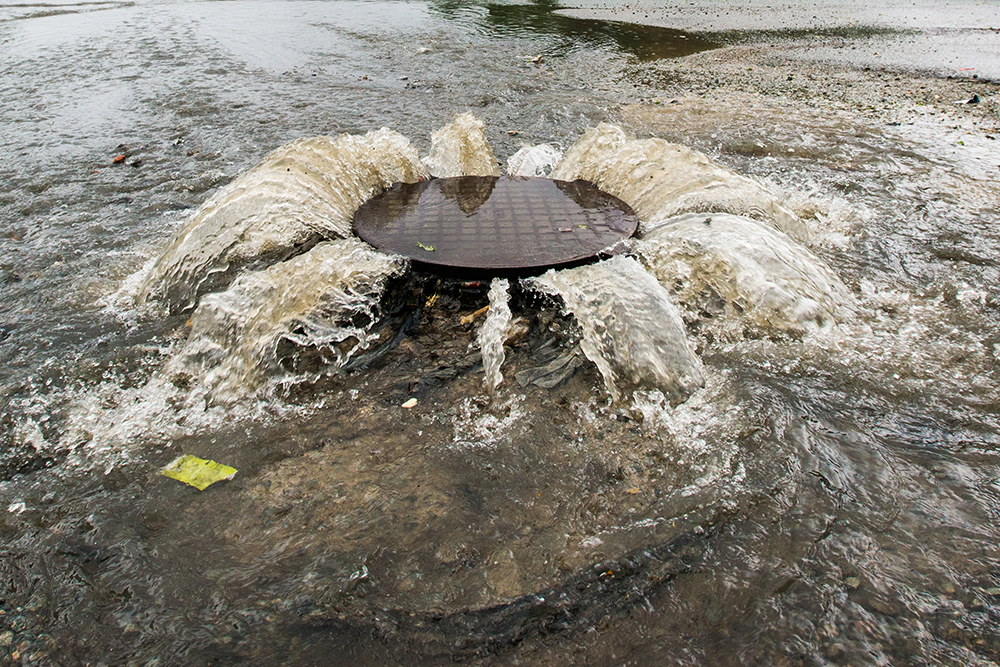 Sewer Discharges
Sewer Discharges
When people learn that sewage is getting into their waters, they might assume something isn’t working at a nearby wastewater treatment plant. This is sometimes the case, but more often the pipes and pumps that deliver our sewage to the treatment plants are the problem. These exposures to sewage can occur in a few ways:
Sanitary Sewer Overflows (SSOs) and Discharges from Sewer Line Breaks
Old underground pipes in our communities and on private property can crack or collapse, leaking untreated sewage into the environment. When it rains, cracked pipes can fill up with rainwater, causing a mix of raw sewage and rainwater to flow out of manholes and into the nearest stormwater catch basin or river, ultimately delivering that contaminated water to the coast and, possibly, to a beach near you. This widespread problem of sewage escaping the collection system before reaching a treatment plant is called a sanitary sewer overflow (SSO).
Combined Sewer Overflows (CSOs) Triggered by Rain
Some of the older cities on the Sound have combined sewer systems. In combined systems, stormwater runoff and wastewater flow into the same pipe and are treated at a wastewater treatment plant. However, during storms when the combined volume of rain and wastewater is greater than the capacity of the treatment plant’s delivery pipes—or is too great for the plant to treat—the excess untreated wastewater and storm runoff gets discharged directly into nearby waterways, an event called a combined sewage overflow (CSO). This toxic brew of raw sewage, household and industrial wastewater, and street runoff causes sudden and often dramatic spikes in fecal bacteria and other pollutants in the water. Swimming near a CSO outfall is not recommended following rainfall (e.g. often within 48 hours of rain), which is why state law in Connecticut and New York requires that each outfall be marked with a sign.
Leaks from Private Sewer Lines and Failing Septic Systems
Private sewer lines and septic systems can also be sources of sewage pollution if they are in disrepair. Collectively, the millions of miles of old private sewer lines and hundreds of thousands of outdated septic systems and cesspools are leaking nitrogen, which causes algae blooms and hypoxic (low oxygen) conditions, and harmful bacteria to local streams and coastal waters.
What can you do?
 Report Pollution
Report Pollution
See something? Take a picture or video and say something!
 Inspect Your Sewer Lines / Septic
Inspect Your Sewer Lines / Septic
Homeowners are responsible for any leaks on their property.
 Capture Stormwater with Green Infrastructure
Capture Stormwater with Green Infrastructure
Diverting stormwater from the system prevents flooding.
 Become A Pollution Watchdog
Become A Pollution Watchdog
Be on the lookout for any pollution entering our waterways.
 Contact Your Reps
Contact Your Reps
Reach out to your representatives about issues important to you.
 Join the Movement
Join the Movement
Sign up for action alerts and stay connected to our campaigns.
